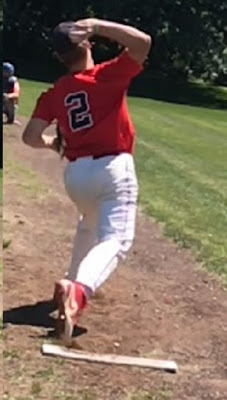Where your command struggles come from.
Throwing
with both feet on the ground discounts your command.
- When you land your foot plant and then make a
throwing action, you twist your back.
> Your back’s twisting action carries down your
spine and into your hips.
> At the same time your throwing arm comes into
release, your body is matching your throwing arm path to your foot plant
position.
> It’s these slight changes to your throwing arm path
that, no matter how good your intentions, causes you to miss your target.
To improve your command, you
need a reliable process that’ll produce the same foot plant position on every
pitch.
Developing elite command.
You can
generate much better command by clearing your front shoulder with one foot still
off the ground. By clearing your front shoulder, your body lands your stride in
the same position on every pitch.
+ To keep your
from falling on your nose, your twisting action out of your front leg lift forces
you to stride.
> Your stride creates the torque that travels up
your core and out your throwing hand.
> By turning your throwing action into a reaction,
you force your throwing hand to come through the same productive release window
on every pitch.
This simple approach turns
your throwing arm into an instrument you use to keep your Team close enough to
win.
Sounds easy enough, but it’s not.
Clearing your front shoulder only
works when you end your front leg lift with your weight centered between your
knees. Since most Pitchers end their front leg lift with their weight over their
back foot, turning your throwing arm into a productive tool isn’t as easy as it
sounds.
If you don’t know the 4
simple actions that’ll end your front leg lift in a dynamically balanced
position, contact us for help. You’ll be glad you did!!!
Skip Fast
Expert Pitching Coach
Professional Pitching InstituteCell or Text: 856-524-3248
E-Mail: skip@propitchinginstitute.com
Copyright © 2018






